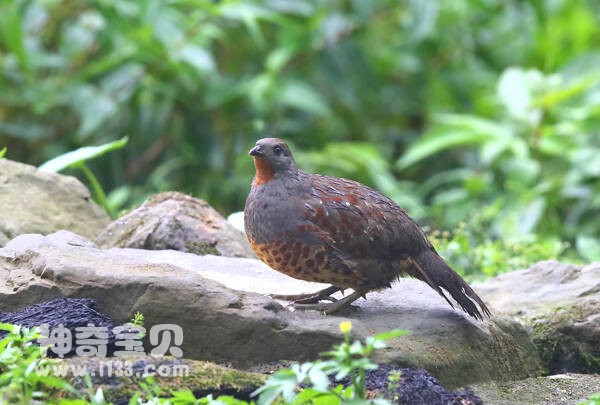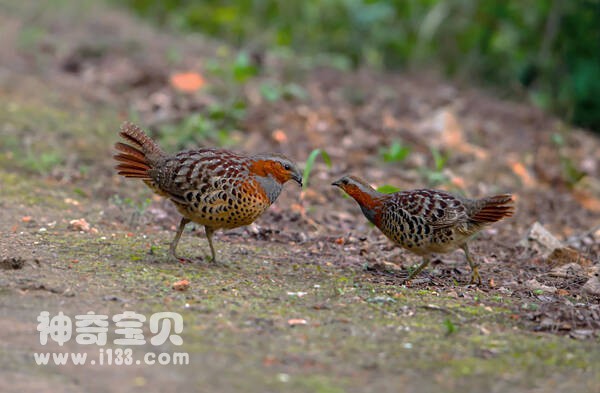Chinese Bamboo Partridge
IUCN
LCBasic Information
Scientific classification
- name:Chinese Bamboo Partridge
- Scientific Name:Chinese Bamboo Partridge,Bambusicola thoracica
- Outline:Landfowl
- Family:Gallinariformes P.family Bambusa
Vital signs
- length:21.4-37.5cm
- Weight:200-325g
- lifetime:No textual research information is available
Feature
Upper dorsal gray-brown, with not very clear dark brown wormlike spots and chestnut red patches
Distribution and Habitat
It is only distributed in the provinces south of the Yangtze River in China, reaching southern Shaanxi in the north, western and northern Sichuan in the west, Yunnan, Guizhou and Taiwan in the south. It is a special bird in China. There are two subspecies in China: the named subspecies and the Taiwanese subspecies. The former lived in the south of the Yangtze River all the year round and reached the south of Shaanxi Province in the north. It was introduced into Japan in 1919 and is now widely distributed, while the latter is limited to Taiwan Province. The subspecies is a common resident bird in central, southern, eastern and southeastern China. The Taiwan subspecies is a resident bird of Taiwan.
It inhabits the bamboo forest, thicket and grass in the low hills and plains below 2000 meters above sea level, and also appears in the hillside farmland and near villages.
Appearance
The male's forehead and brow are gray, and sometimes the forehead is not gray but the top of the head. The brow lines are thick and long, extending back to the top back. The top of the head and nape of the neck are olive brown, with faint dark brown markings. Upper dorsal gray-brown, with not very clear dark brown wormlike spots and chestnut red patches; Cheek, ear and side of neck chestnut brown; The shoulders and lower back are olive brown, densely covered with black wormlike spots, with chestnut red patches and white spots. Waist, tail, large and middle wings and third class flight feathers olive brown, densely covered with black worm-like spots; The middle of the end of the waist and tail cover feathers is decorated with a fine black brown spot, some spots are light chestnut in the front, and black in the back; There are brownish yellow and chestnut spots on the ends of the third class and the large and middle coverts. Large covering with brown tip spots. The primary feathers,
Details
Chinese Bamboo Partridge (scientific name: Bambusicola thoracica) has 2 subspecies.

Grouse usually move in groups, consisting of a few to more than 20, with larger groups in winter and scattered activities during the breeding season. Each group has a fixed activity area, the feeding ground and habitat are fixed, and the territory is strong. It usually starts at first light and lasts until dusk. They live in bamboo forests or trees at night, often in groups with their heads facing the same direction. When the weather is cold, the individuals are close to each other and often live on the same branch. When the weather is hot, the distance between the individuals is larger, or they live on several branches separately. Most of the time in the grass on the ground, often walk through the grass, and make a 'Sha,Sha' sound. When frightened, they hide in the grass and do not move, generally rarely take off, when people are approaching, they suddenly fly, the group is scattered and flies to all sides, flying quickly, the wings flap faster, but not high, usually flying close to the ground, and not lasting, flying far and falling into the grass. Sometimes they fly up trees, especially when chased by hounds. There is a seasonal vertical migration of short distances, often up the mountainside or mountaintop in summer and down to the piedmont plain in winter.
The call of the gray-breasted bamboo chicken is harsh "; people pray, people pray, people pray" Noise. Omnivorous. It mainly feeds on plant buds, shoots, tender leaves, fruits, seeds, weed seeds, grains, wheat, beans and other plants and crop seeds, as well as insects such as moth larvae, walking insects, cucurbita, locust, locust nymphs, ants and other invertebrates.

The breeding period is from April to July. Usually by the end of March, the flock begins to disperse, and the male and female birds begin to make loud mating calls that can be heard at a distance. Nest in a hollow in the ground under bushes, grass, trees, or bamboo forests, and sometimes in exposed areas near the roots of trees. Most of the nests are natural pits on the ground, or dug by birds, with dead grass and dead leaves. Each clutch lays 5-12 eggs, pale yellow, earthen or pale brown eggs, covered with brown yellow, brown or pale gray spots, oval eggs, size of 30-34 mm ×25-27 mm, weight 12-13 grams. Incubation begins after the eggs are laid, and the incubation period is 17-18 days. The chicks are early in life and become mobile soon after hatching and can fly a few days later.
Wild bamboo chickens to weed seeds, locusts, locust and other as the main source of food, therefore, its natural growth or grazing in the forest, can control or eliminate pests, indirectly play a role in protecting forests and crops, conducive to the development of agriculture and forestry. Artificial breeding can protect wild ecological resources.
On September 30, 2020, the State Forestry and Grass Administration issued the Notice on Regulating the Scope of Classification Management of fasted wild Animals on its official website. For 45 kinds of wild animals such as the grey chest bamboo chicken, the Notice clearly requires that the relevant farmers should be actively guided to stop breeding activities before the end of December 2020 and complete the disposal work in accordance with the relevant regulations. If it is really necessary to retain an appropriate amount of seed sources for non-edible purposes such as scientific research, the feasibility of the work program should be fully demonstrated and the relevant procedures should be strictly implemented.
Listed on the International Union for Conservation of Nature (IUCN) 2012 Red List of Threatened Species ver 3.1 - Low Risk (LC).
It was included in the List of Beneficial Terrestrial Wildlife under State Protection or of Important economic and scientific research Value issued by the State Forestry Administration of China on August 1, 2000.
Protect wild animals and eliminate wild meat.
Maintaining ecological balance is everyone's responsibility!








